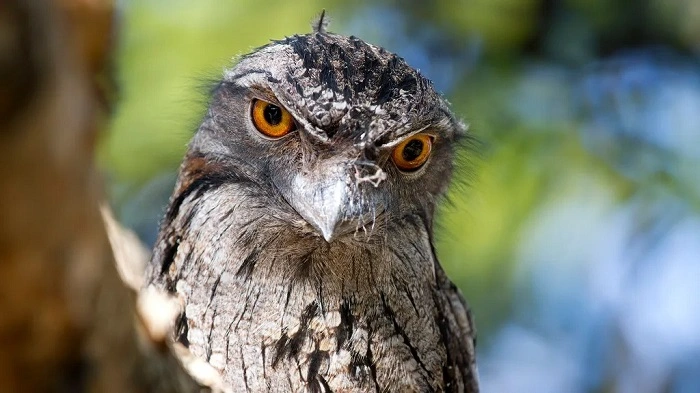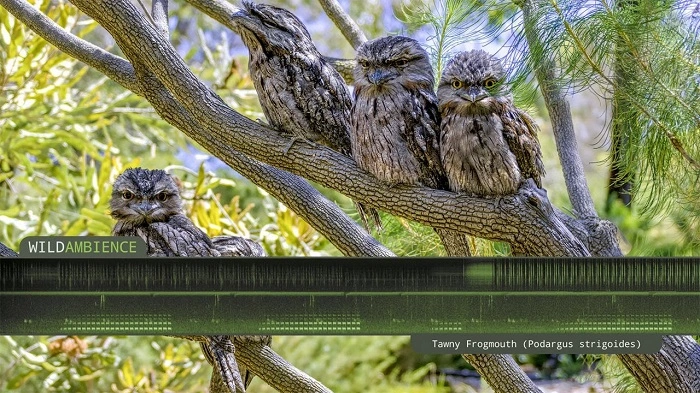The frogmouth bird is one of the strangest-looking creatures in the avian world. But one thing that grabs instant attention is the frogmouth bird’s open mouth—wide, flat, and gaping. Whether you’ve seen it in a viral meme or during a night safari, this behavior isn’t just unusual—it serves a real biological purpose. In this article, we dive into everything you need to know about the frogmouth bird’s open mouth, including its function, habitat, feeding style, and behavior.
From its unusual anatomy to its camouflage skills, the frogmouth bird remains a fascinating subject for birdwatchers and wildlife photographers alike.
What Is a Frogmouth Bird
Frogmouth birds belong to the Podargidae family and are closely related to nightjars and oilbirds. They are found mostly in Southeast Asia, Australia, and parts of the Indian subcontinent. These nocturnal birds are best known for their wide, flat beaks that look like a frog’s mouth—hence the name.
Their cryptic plumage helps them blend into tree branches during the day, making them nearly invisible. At night, they come alive, hunting insects and small vertebrates.
Why Do Frogmouth Birds Keep Their Mouths Open

The frogmouth bird’s open mouth is one of its signature traits, and it serves several important purposes:
1. Thermoregulation
Frogmouth birds often sit still with their mouths wide open to regulate their body temperature. Since they are covered in thick feathers, this behavior helps them cool down, especially in hot and humid environments.
2. Passive Hunting
Their wide mouths act like natural insect traps. By staying motionless and keeping their mouths open, they can catch flying insects that pass by, especially moths.
3. Threat Display
When feeling threatened, the frogmouth bird may open its beak wide to look larger and more intimidating. This act, along with its large yellow eyes, can scare off predators or at least give them pause.
4. Begging Behavior in Chicks
Young frogmouth chicks often sit with their mouths open to signal hunger to their parents. This also mimics a gape display seen in many bird species.
Anatomy of the Frogmouth’s Mouth
The frogmouth’s beak is both wide and flat, very different from the pointed beaks of raptors or songbirds. Its lower mandible is short but wide, allowing the bird to open its mouth dramatically. This anatomical structure allows it to:
- Scoop flying insects mid-air
- Passively trap bugs while roosting
- Appear more intimidating when threatened
Despite its size, the frogmouth’s beak isn’t strong enough to tear prey apart. Instead, it relies on swallowing smaller animals whole.
Types of Frogmouth Birds
There are several species of frogmouth birds found across different continents. Here are some of the most well-known types:
| Common Name | Region |
| Tawny Frogmouth | Australia |
| Sri Lanka Frogmouth | Sri Lanka & Western Ghats |
| Large Frogmouth | Southeast Asia |
| Papuan Frogmouth | New Guinea |
Each species has a similar wide-mouthed appearance but varies in size, color, and vocal patterns.
The Role of Camouflage
One of the frogmouth’s key survival strategies is mimicking dead branches. With their mottled gray and brown plumage, frogmouths can sit completely still during the day and resemble part of the tree they’re perched on.
Interestingly, they often keep their mouths open while blending in, which confuses both predators and prey. It’s an effective visual trick when combined with their rigid, upright posture.
Behavior During the Day vs. Night
Frogmouths are nocturnal, meaning they are active during the night and spend most of the day resting.
Daytime Behavior
- Roost motionless on tree branches
- Open mouth slightly for temperature control
- Blend in with surroundings to avoid predators
Nighttime Behavior
- Hunt for insects and small vertebrates
- Communicate using low, booming calls
- Feed their chicks or mate during breeding season
The contrast between their silent, statuesque daytime pose and their active nighttime routine makes them truly unique among birds.
Sounds and Communication
Though often mistaken for owls, frogmouth birds have very different calls. Their sounds are generally:
- Low-pitched and vibrating
- Described as “booming” or “resonating”
- Used mainly at night to attract mates or warn off rivals
Frogmouths do not typically vocalize while keeping their mouths open. The open-mouth pose is more visual than auditory.
Conservation Status
Most frogmouth species are not currently endangered, but habitat loss poses a threat in several regions, especially:
- Deforestation in Southeast Asia
- Urbanization in Australia
- Fragmentation of the Western Ghats in India
Birdwatchers and conservationists continue to monitor their populations closely due to their dependence on dense, undisturbed forest habitats.
Frequently Asked Questions
Why does the frogmouth bird open its mouth so wide?
The wide mouth helps with cooling, passive insect hunting, and threatening predators. It’s a multi-functional tool for survival.
Is the frogmouth bird related to owls?
Although they resemble owls in appearance and nocturnal behavior, they are not closely related. Frogmouths belong to a different family altogether.
Can the frogmouth bird hurt humans?
No, frogmouths are harmless to humans. Their beaks are not built for aggression or tearing and are used primarily for catching insects.
Where can I see a frogmouth bird in the wild?
They are found in forests across Australia, India, Sri Lanka, and Southeast Asia. The Tawny Frogmouth is the most commonly spotted species.
Do frogmouth birds make noise with their mouths open?
No, the open-mouth display is mostly visual. Their vocal calls are made with the mouth closed or slightly open during nighttime activity.
Final Thoughts
The frogmouth bird’s open mouth isn’t just a curious visual quirk—it’s a critical part of its survival strategy. From regulating body temperature to catching insects and warding off threats, this wide-mouthed pose serves a variety of functions. Combined with its remarkable camouflage and nocturnal habits, the frogmouth remains one of the most fascinating and misunderstood birds in the natural world.
Whether you’re a wildlife enthusiast, a bird photographer, or just someone captivated by strange animals, the frogmouth bird is sure to amaze. The next time you see a picture of a frogmouth bird with its mouth open, remember that there’s far more behind that odd expression than meets the eye.



